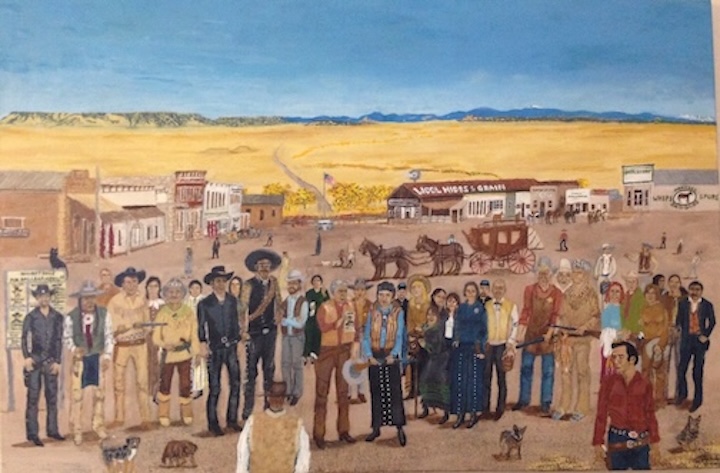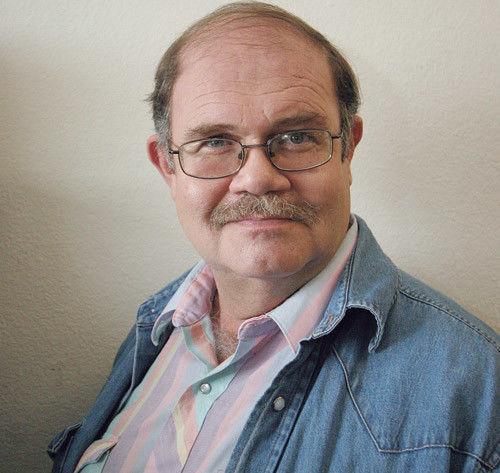My desk was next to Jerry Padilla’s when I first worked at The Taos News. He was the editor of the paper’s Spanish section. I was the copy editor then. Later, I would be his boss as the paper’s editor-in-chief.
My co-workers warned me that Jerry was talkative and easily encouraged. They were right. He talked my ear off about everything and anything, from chupacabra — a legendary creature he believed existed — to his beloved Sea Hawks although he stopped nicely when I said I had to concentrate on my work.
Then Jerry found out I was Portuguese. He’s Hispanic with his family dating back to the early Spanish settlers in New Mexico. My family’s arrival was more recent via my grandparents. We frequently talked about the similarity of our family traditions.
I joked that centuries ago his people and mine each owned half the world thanks to Pope Alexander VI’s Line of Demarcation. He liked that.
Then because I was a new member of the staff, he wrote me a calavera. These poems are a tradition of the Day of the Dead or Día de los Muertos, celebrated Nov. 1. As Jerry explained, calaveras poke fun at the living.
Jerry wrote mine in Spanglish, a mixture of Spanish and English commonly used in Taos. Here is the calavera he wrote for me. Two hints: Sebastiana is a nickname for death. She is often depicted driving a cart. And, “losing my goats” means “losing my mind.”
Joan Livingston, Se le Fueron las Cabras, Adios
“Pero, it’s my job to verify todo esto, all these,
Are you really, ¿who esto escribió?”
“How dare you doubt me, your Comadre Sebastiana,
In my cart ride many from el Portugal.”
“I’m sorry, perdón, sólo I must be losing my goats,”
“Te ayudo, my dear, to find them again,
Jump into my carreta, for an eternal ride we shall go,
Vamos, it’s time, my turn now, lost goats y todo,
Mi deadline you have met.”
Jerry wrote that calavera in 2007. Every year, he made one up for the new hires in the newsroom and published them on the Spanish page. One time, at my request, he wrote one for my then-agent, about a near-death experience he had hiking in the snowy Rockies with his dog. Spencer loved it.
He was fascinated by the history and culture of Northern New Mexico and wasn’t shy telling people about it. His passion for history included preserving the unique Norteño dialect of Spanish spoken in Northern New Mexico. He was always after me to make sure the newsroom’s staff used accents properly in our stories.
I recall the time I was in the midst of the trial the newspaper’s owner gave me to show whether I had the skills to be its top editor. We were on deadline and I was editing madly when Jerry stood over the cubicle’s short wall. He was excited about a possible Big Foot siting in a Southern state. He kept going on and on while I was trying to concentrate on getting this paper out. Finally, I told Jerry, “Unless they find Big Foot in Taos, I’m not interested.” Disappointed, he left me alone.
Jerry was also an artist, painting in acrylics, and he was skilled at capturing people’s images. His painting below contains the then staff of The Taos News. He made up a scene that involved the characters of Bonanza, that old TV show he loved. That’s me in the center, holding a rifle and talking with Ben Cartright. Jerry is in the front row, fourth from the left. I hope The Taos Newsstill held onto it.
Jerry died in 2012 at age 59 from a long-standing seizure disorder. That was six months after he retired as the Spanish editor, a position he held for 23 years, although he continued to write a column. He kept stopping by the newsroom until a couple of days before his death to talk, of course.
I still miss my friend now that he, too, has traveled to the other side. Adios Jerry Padilla.

